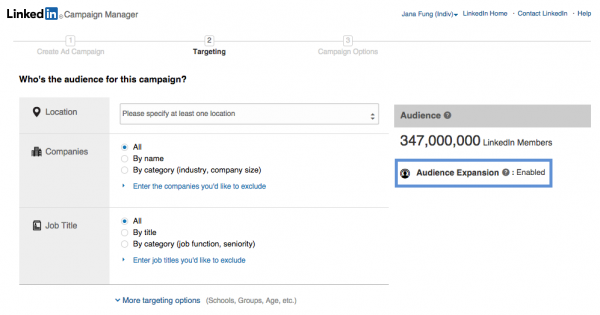
It’s no mystery that marketing campaigns are becoming more and more targeted. People expect relevancy online. Fewer people have the patience for emails, ads, and other interruptions that aren’t relevant to them.
40.5 percent of survey respondents prefer to see targeted ads above generic ads, according to CMO.
While B2C companies have known and embraced targeted digital campaigns for a while, B2B companies are slower to follow suit. Many B2B companies follow a one-size-fits-all approach to marketing. They usually advertise themselves with company-centric messaging. And they talk about their experience or accolades instead of focusing on their buyers' needs and aspirations.
Even though they have a loose idea of their target buyer, very few B2B organizations have really launched a strategy to distribute targeted materials to specific high-value buyers.

Account-based marketing, or ABM, responds to the need for targeted marketing. With ABM, you narrow your focus to only your target accounts. Strategically, you create demand generation for a specific list or type of target lead.
ABM marketers create targeted content marketing to reach the right people. For example, they will build a content arsenal of eBooks, educational videos, and sales one-pagers for a specific buyer persona.
It can be scary to specialize when you are used to generalizing. You may feel that you’re “missing out” on potential business. But differentiation and specialization are hugely important in advertising today. So, how do successful ABM agencies reach their target audience where they are? Targeted advertising is a channel that drives highly relevant content to a specific audience of B2B prospects.
Traditional paid advertising is similar to a one-to-many distribution model, where a company shares generic content with as many people as possible. They may launch a generic call-to-action, like “Request a demo” or “Contact sales,” and hope to capture many people in a wide net. Common KPIs for traditional advertising are the number of impressions on the advertisement.
On the other hand, targeted advertising more closely resembles a one-to-one interaction. The content and messaging are tailored, and the audience is built around very specific people or types of people.
For example, a content offer called “Solving Interoperability Challenges: A Guide for Enterprise IT Directors” could be shared with a small audience of 5,000 IT directors at companies with 1,000 employees or more.

Not only is this strategy reaching the right people, but it’s effectively capturing their interest. Targeted campaigns often have higher average conversion rates, even earning fewer impressions. B2B companies should strive to educate and relate to their target buyers. And targeted advertising lets them do just that.
Targeted advertising for ABM can happen in many different digital formats, including:
A high-converting B2B digital strategy employs many of these tactics. By launching targeted content to target leads on different platforms, you increase your visibility and become an educational powerhouse.

Read more: Must-have B2B Lead Generation Strategies for 2019
The most important thing with targeted advertising and ABM is being relevant. Test your messaging and delivery method to learn what works with target leads. Always set clear, results-driven KPIs across channels so you can compare apples to apples, like leads generated, conversion rate, and cost-per-lead.
Your ABM strategy will pick up traction over time. Then, you can use your helpful, high-quality content marketing to nurture new target leads continually — winning more deals and seeing high marketing ROI for your efforts.
CMO, “15 Mind-Blowing Stats About Ad Targeting”
https://www.cmo.com/features/articles/2014/7/15/mind_blowing_stats_ad_targeting.html#gs.726pGnU5
by Jonathan Franchell, CEO of Ironpaper - For more tips and hacks: Need to remove a new line after h1 tags? Both web designers and SEO practitioners need to employ headline tags: H1, H2, H3 in several ways to improve web page structure and tag...

The Crowded Arena of the IT Marketplace Updated December 2024 The Information Technology (IT) landscape is experiencing rapid growth and intensifying competition. IT spending is projected to reach nearly 5.1 trillion U.S. dollars in 2024, a...

Updated December, 2024 The field of digital marketing is evolving rapidly in response to new technology and changing buyer expectations. To help career-minded marketers, we’ve rounded up the top 10 skills needed to succeed in the field. These are...
